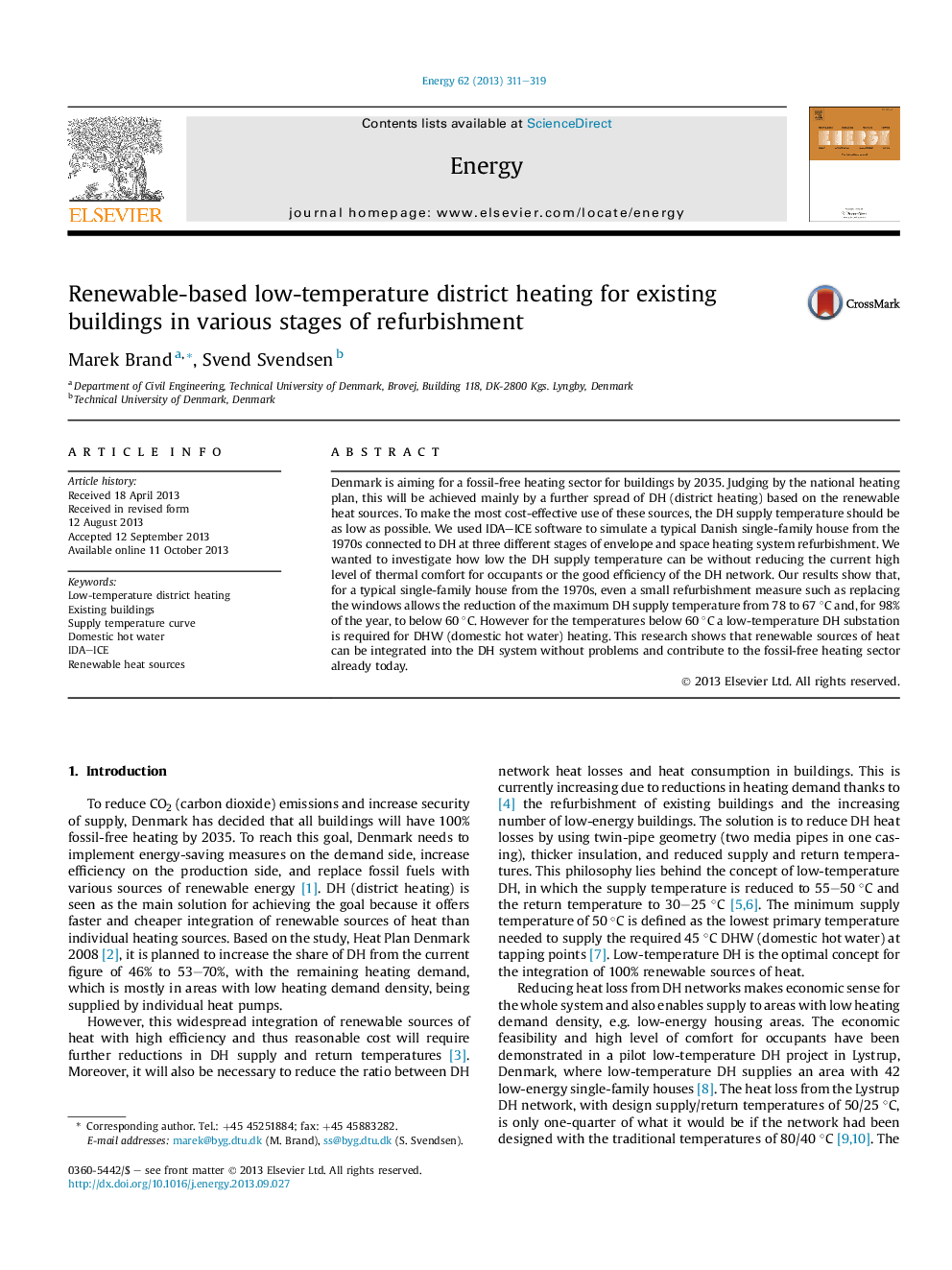| Article ID | Journal | Published Year | Pages | File Type |
|---|---|---|---|---|
| 1732761 | Energy | 2013 | 9 Pages |
•Denmark is aiming for a 100% fossil-free heating sector for buildings by 2035.•District heating with a supply temperature of 55–50 °C is central to the solution.•We model a typical 70s house to find the lowest possible supply temperature.•The supply temperature should not be >55 °C for more than 2% of time over a year.•Existing buildings can be integrated into low-temperature district heating.
Denmark is aiming for a fossil-free heating sector for buildings by 2035. Judging by the national heating plan, this will be achieved mainly by a further spread of DH (district heating) based on the renewable heat sources. To make the most cost-effective use of these sources, the DH supply temperature should be as low as possible. We used IDA–ICE software to simulate a typical Danish single-family house from the 1970s connected to DH at three different stages of envelope and space heating system refurbishment. We wanted to investigate how low the DH supply temperature can be without reducing the current high level of thermal comfort for occupants or the good efficiency of the DH network. Our results show that, for a typical single-family house from the 1970s, even a small refurbishment measure such as replacing the windows allows the reduction of the maximum DH supply temperature from 78 to 67 °C and, for 98% of the year, to below 60 °C. However for the temperatures below 60 °C a low-temperature DH substation is required for DHW (domestic hot water) heating. This research shows that renewable sources of heat can be integrated into the DH system without problems and contribute to the fossil-free heating sector already today.
